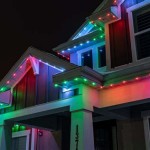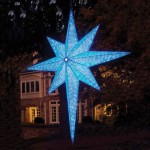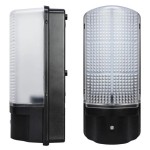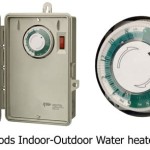What Is The Best Outdoor Antenna For Digital TV Reception?
Cutting the cord and embracing free over-the-air (OTA) television is an increasingly popular way to save money. A critical component of this transition is selecting the right outdoor antenna to ensure clear, reliable reception of digital TV signals. This article explores the factors influencing antenna selection and highlights several key features to consider.
Antenna Type
Several types of outdoor antennas exist, each designed for specific reception scenarios. Understanding these differences is crucial for optimal performance.
Yagi antennas are highly directional, meaning they focus their reception on a specific direction. This makes them ideal for areas located further from broadcast towers or for targeting a single tower with a strong signal. Their distinctive "arrow" shape facilitates precise aiming.
Log-periodic antennas offer a wider reception range compared to Yagi antennas. They can receive signals from multiple directions simultaneously, making them suitable for areas with broadcast towers in various locations. While not as powerful as a Yagi for a single direction, their versatility is a significant advantage.
Multi-directional antennas, often referred to as "omni-directional," receive signals from all directions. This eliminates the need for precise aiming and makes them convenient for urban areas with closely spaced broadcast towers. However, they may not perform as well as directional antennas in fringe reception areas.
Panel antennas are a flat, compact option well-suited for attics or other discreet installations. While generally less powerful than larger outdoor antennas, they offer a balance of performance and aesthetics.
Range
Antenna range refers to the maximum distance from broadcast towers that the antenna can effectively receive signals. This is usually measured in miles and is a crucial factor in antenna selection. Overestimating range can lead to disappointment, while underestimating may limit available channels.
Manufacturers typically specify the range of their antennas. It's important to research local broadcast tower locations and distances to ensure the chosen antenna can adequately reach the desired signals. Online tools are available to assist in determining tower locations and signal strength.
Frequency Support
Digital TV signals are broadcast on both VHF (Very High Frequency) and UHF (Ultra High Frequency) bands. An effective antenna needs to support both frequencies for comprehensive channel reception. Some antennas are optimized for one frequency over the other, so checking frequency specifications is essential.
The packaging or product description should clearly indicate VHF and UHF compatibility. Opting for an antenna with robust support for both frequency ranges ensures access to the widest possible selection of channels available in a given area.
Gain
Antenna gain refers to the antenna's ability to amplify the received signal. It is measured in decibels isotropic (dBi). Higher gain antennas can capture weaker signals, making them beneficial for fringe reception areas. However, excessively high gain can sometimes overload the tuner, causing interference. Balancing gain with the specific reception conditions is important.
Weatherproofing
Outdoor antennas are exposed to various weather conditions, including rain, snow, and wind. A durable, weatherproof construction is essential for long-term performance and reliability. Look for antennas made from robust materials and designed to withstand harsh environmental factors.
Features such as UV-resistant coatings and sealed components contribute to longevity and prevent signal degradation caused by weather damage. Investing in a well-constructed, weatherproof antenna minimizes the need for frequent replacements.
Installation
The ease of installation varies between antenna models. Some antennas come with comprehensive mounting hardware and clear instructions, while others require more complex setup procedures. Considering installation complexity is essential, especially for those with limited experience in antenna installation.
Factors such as mast requirements, cable connections, and grounding considerations should be evaluated before purchase. Opting for an antenna with a straightforward installation process can save time and frustration.
Pre-amplification
Some antennas include a built-in pre-amplifier designed to boost weak signals. This can be beneficial in fringe reception areas or when using long cable runs. However, pre-amplifiers are not always necessary and can sometimes introduce noise if the signal is already strong.
Carefully assess the reception environment to determine if a pre-amplifier is needed. In some cases, an external pre-amplifier can be added later if signal strength proves insufficient.

Outdoor Digital Tv Antenna For Hdtv And Uhf Reception Whole Factory Best Quality Yagi Made In China Com

Top 10 Best Antenna For Rural Areas In 2024 Expert Reviews Our Choices

The Best Tv Antennas For Rural Areas To Get Live Television Popular Science

What Is The Best Place To Put Tv Antenna Digital Outdoor

Motorized Digital Television Antenna Install And Review

Which Is The Best Tv Antenna For Rural Areas

Warm Reception Jaycar

Outdoor Digital Tv Antenna For Hdtv And Uhf Reception Whole Factory Best Quality Yagi Made In China Com

Best Outdoor Digital Tv Aerial For Freeview Review Posh Living

How To Get Clear Tv Antenna Reception Essential Tips And Troubleshooting Techniques Cordcutting Com
Related Posts







